OPUNTIA
Opuntia
Mill., Gard. Dict. Abr. ed. 4: [s.p.]. 1754; Fl. China @ eFloras.org 13: 210; Pinkava, Fl. North Amer. @ eFloras.org 4: 123; Parker, For. Fl. Punj. ed. 1: 258. 1918 (Reprint 1973); Nopalea Salm- Dyck, Cact. Hort. Dyck. 1849: 63. 1850; Pinkava, Fl. North Amer. @eFloras.org 4: 148.
Shrubs or small trees, erect to trailing. Trunk +/- terete with increasing age, main axis determinate. Stems fleshy, jointed, many branched; segments laterally flattened, variously shaped from circular, elliptic, ovate, linear, lanceolate, falcate, obovate to oblanceolate; areoles present on both surfaces, elevated, usually elliptic, circular or obovate, each with glochids and 0-1-many spines (15+). Leaves small, usually conic, terete, subulate, caducous. Flowers solitary, from areoles, lateral or subterminal, rarely terminal, sessile, usually bisexual, actinomorphic, epigynous, red or yellow. Receptacle (Hypanthium or Perianth tube) obovoid, truncate and depressed at apex. Perianth rotate, spreading or erect, inserted at rim of receptacle, perianth segments numerous, usually outer ones sepaloid, inner ones petaloid. Stamens numerous, inserted in perianth throat; filaments slender, pink to red to scarlet, much exceeding perianth. Ovary inferior, unilocular, ovules numerous on parietal placentas; style nearly equal to or longer than stamens; fresh stigma lobes light green, pink with ageing. Nectar chamber simple and open or covered by proximal thickening of style. Fruits fleshy or dry, globose or ovoid, umbilicate with areoles, glochids, sometimes with spines. Seeds greyish or brownish, flattened, encased in a white, hard, funicular envelope or aril.
144 species
Opuntia cochenillifera
Opuntia cochenillifera
(L.) Mill., Gard. Dict., ed. 8. Opuntia No 6. 1768; Fl. China @ eFloras.org 13: 211; Nopalea conchenillifera (L.) Salm- Dyck, Cact. Hort. Dyck. 1849: 64. 1850; Pinkava, Fl. North Amer. @ eFloras.org 4: 149; Cactus cochenillifer L., Sp. Pl. 1: 468. 1753.
Shrubs or small trees up to 2-3 m tall. Trunk when present terete. Stem segments fleshy, green, large, linear, elliptic to obovate, occasionally falcate, 8-35(-50) cm x 5-8(-15) cm, thick, margin entire, base and apex rounded; areoles 1-2+ cm apart, ca 2 mm diameter. Spines usually absent, when present 1-3 (more on terete stem) per areole, spreading, greyish, acicular, usually straight, up to 3 cm long; glochids inconspicuous or many, ca. 1 mm long, early deciduous; wool tan to white. Leaves conic, 3-4 mm, early deciduous. Flowers 4-7 cm long, 1.5-2.5 cm in diameter, bisexual, actinomorphic, epigynous, red. Receptacle tube (hypanthium or perianth tube) 2.5-3.5 cm long, green, bearing areoles with many glochidia but no spines. Perianth ca. 2 cm long, perianth segments in few series, free, erect, imbricate; outer segments small (5 mm x 4 mm) becoming progressively larger inwards (20 mm x 9 mm), all petaloid, bright red, ovoid, spatulate, oblong, obovate; inner segments appressed against stamens. Stamens numerous, crowded, arising from base and throat of perianth tube/ hypanthium, much exceeding the perianth; filaments 3-4 cm long, pink; anthers yellow, ca. 1.5 mm long. Ovary inferior, conical, 1-locular, ovules numerous, placentation parietal; style exceeding the stamens, 4+ cm long, pink, nectar chamber elliptic to obconic, covered by extended proximal thickening of style; stigma lobes erecto-patent, light green, 6-8, ca. 3 mm long. Fruits ellipsoid, 2.5-4 cm x 2-2.5 cm, red, areoles well distributed, spineless, with deep umbilicus. Seeds tan to grey, 3-5 mm x 1.5-3 mm, slightly pubescent.
Common Names: Conchineal Cactus, Velvet Opuntia, Woolly Joint Prickly Pear, Nopales Opuntia, Nopal Cactus
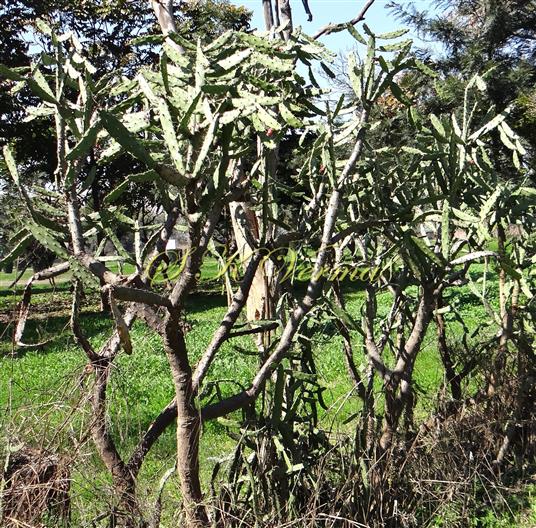
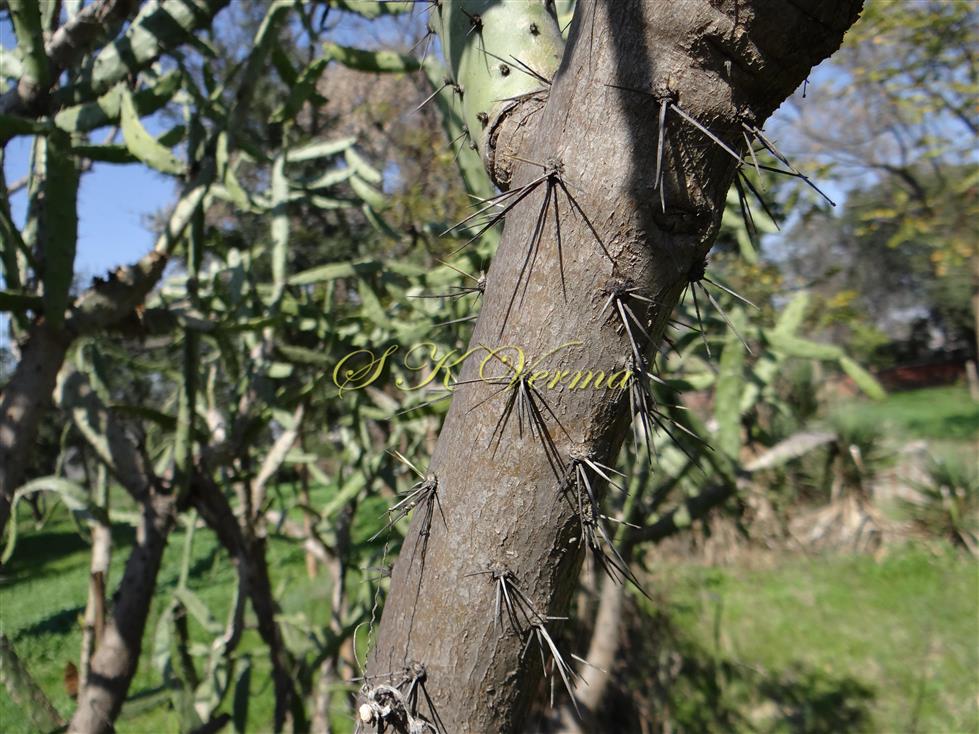

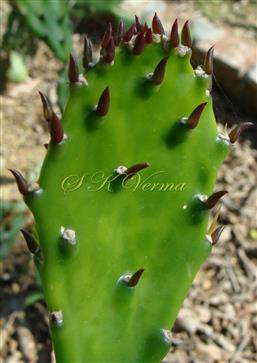

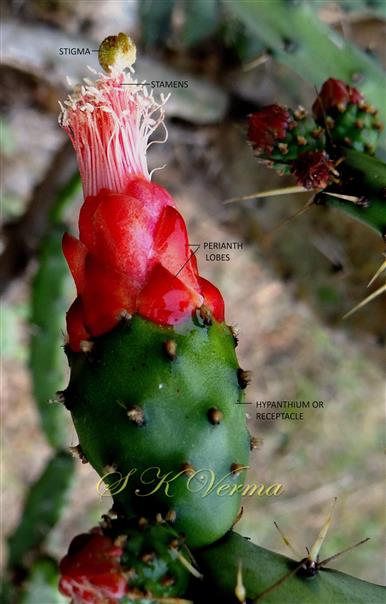
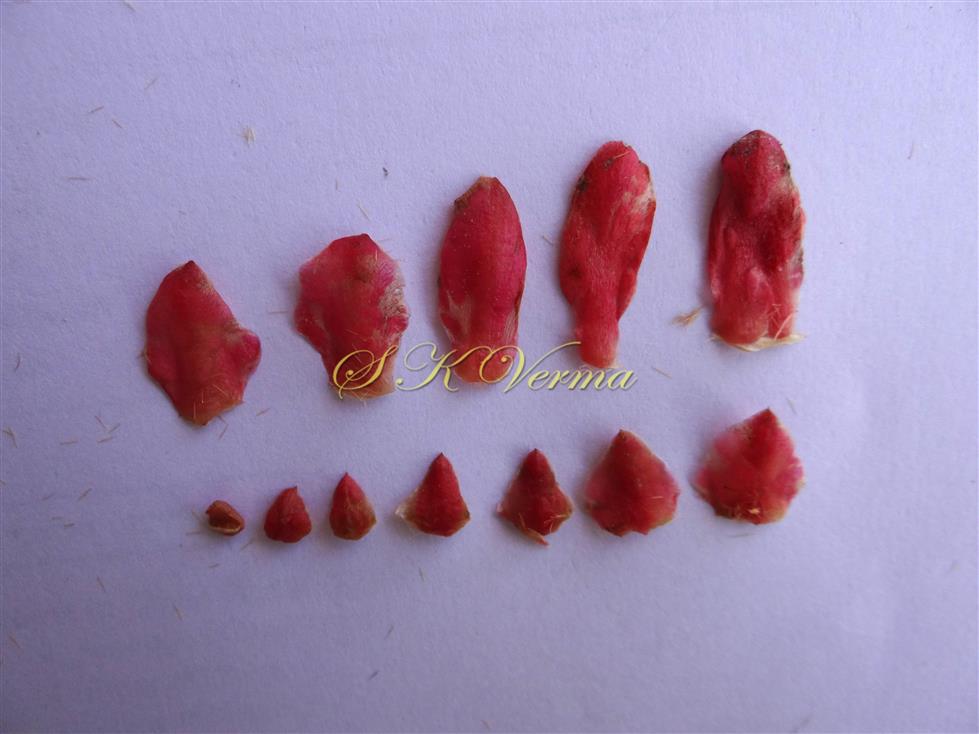
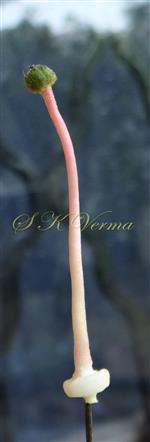
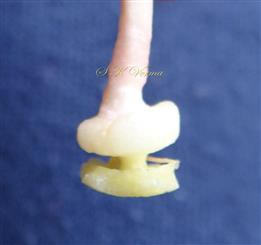
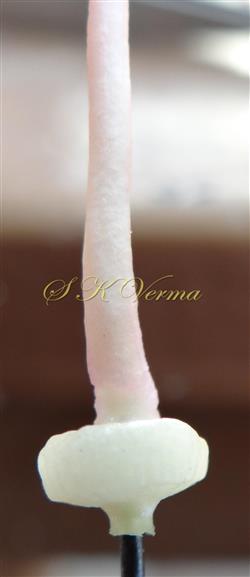
 V.S.-DSC00699.jpg)
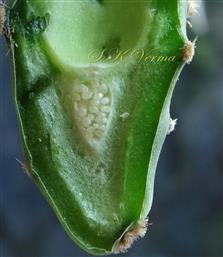
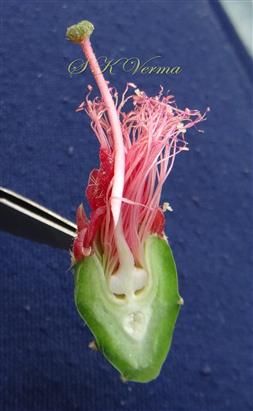
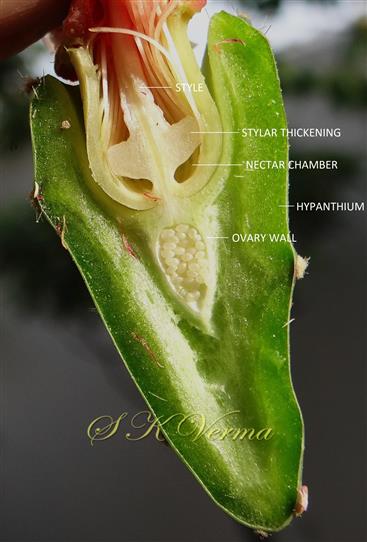
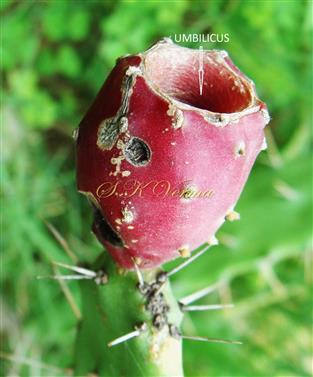



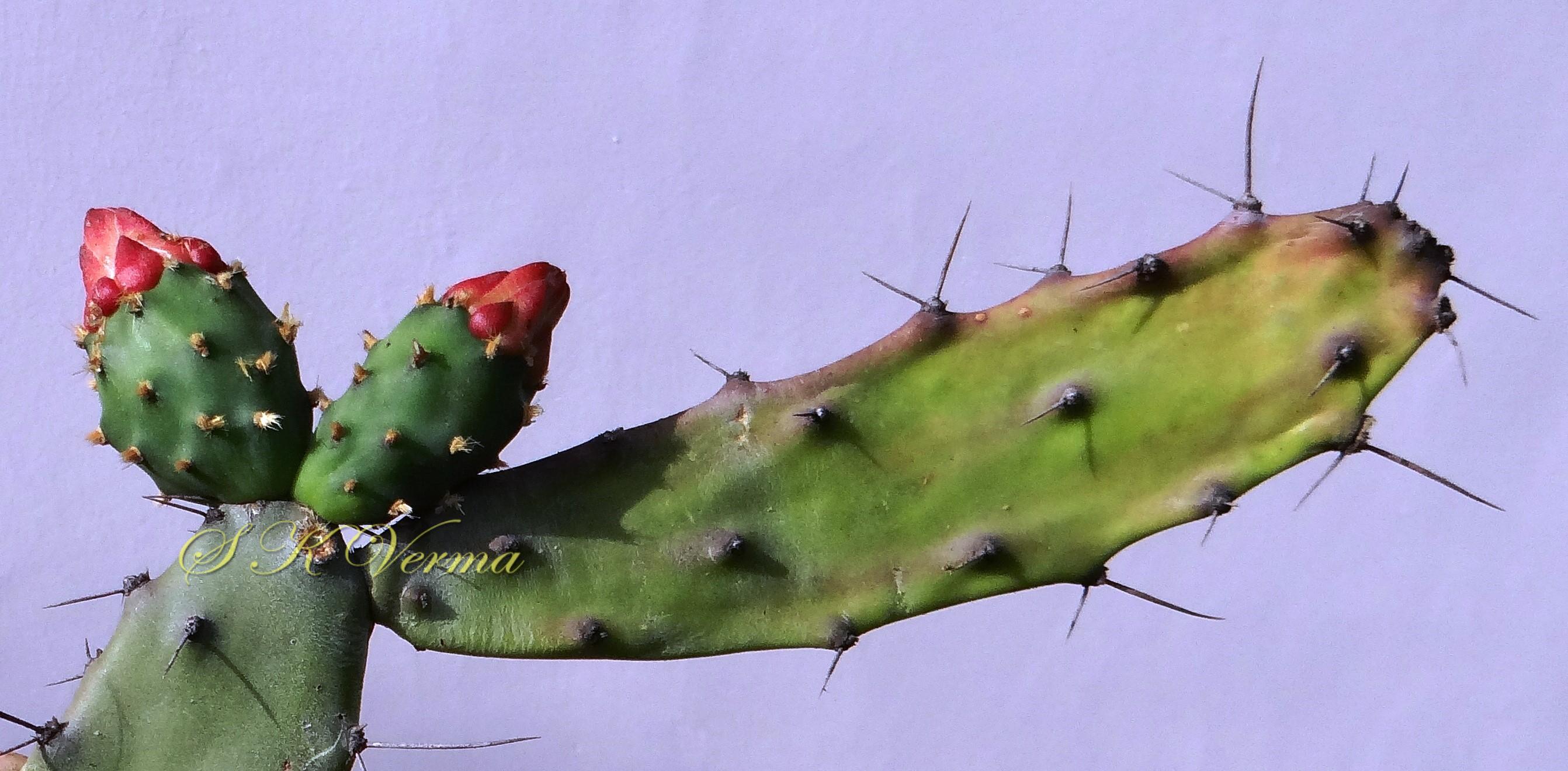

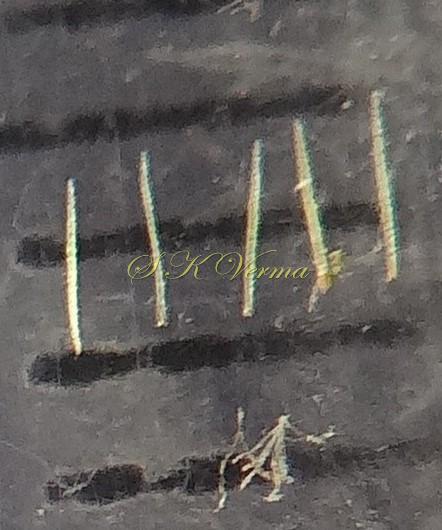





 V.S.-DSC00699.jpg)



